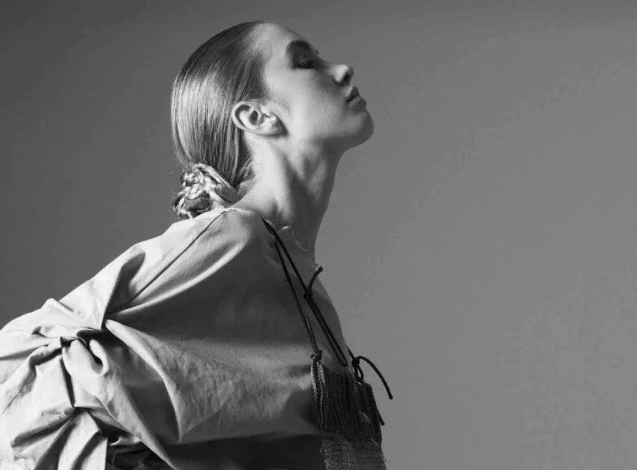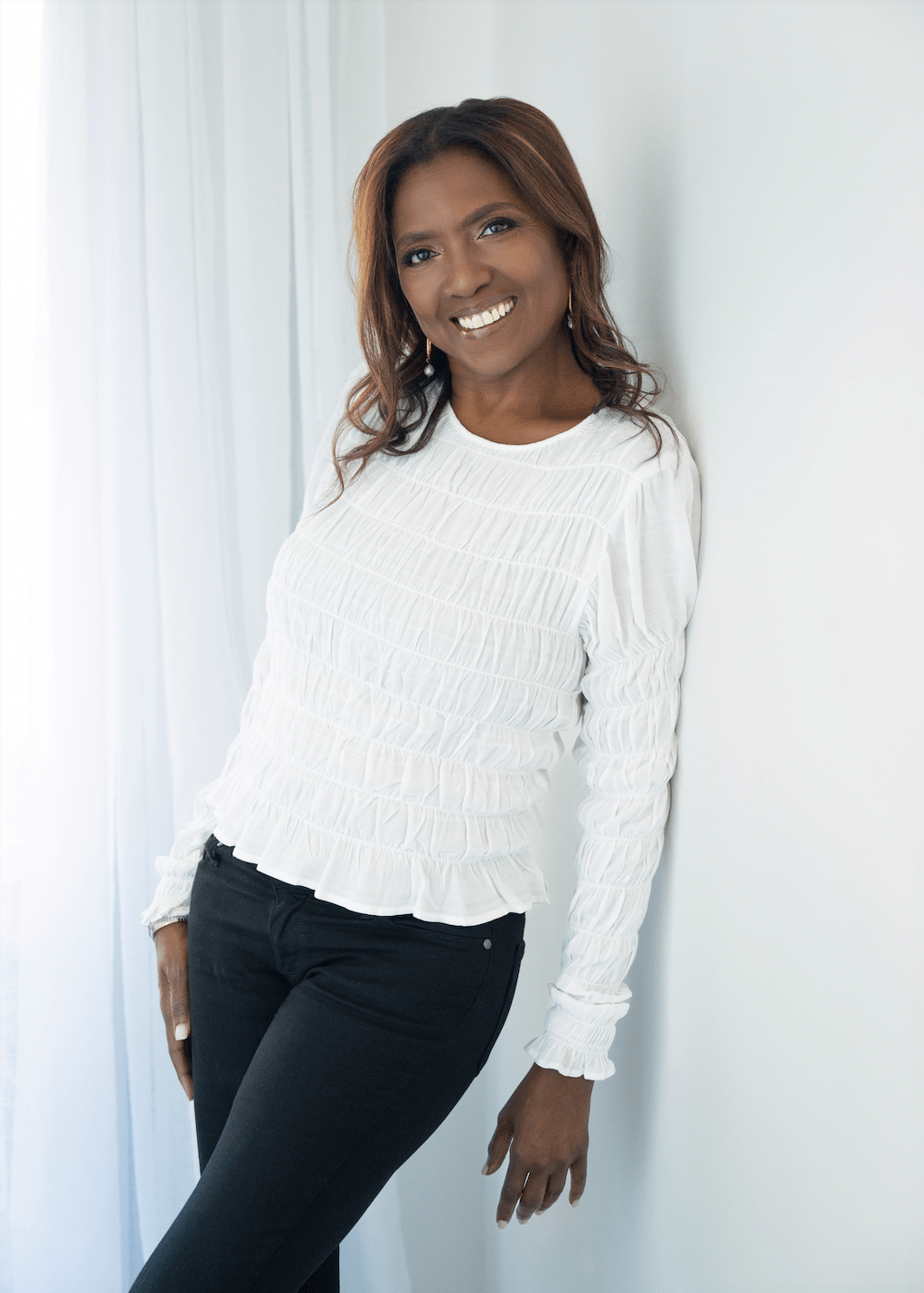Lifestyle
A day in the life of Ria Serebryakova – 285K+ Instagram Followers

The Model Ria Serebryakova – known on Instagram as Riasalvation, quickly wrapped up more than 285K followers on Instagram. We take a look at why she’s so popular and if there are any social media lessons to learn from her:
Ever since I first saw Ria’s face in the AG Hair commercial on TV, I sat up and took notice, realizing that this girl is going to get far in the modeling world. Her fresh-faced innocence combined with her natural beauty and brooding gaze was all that I needed to instantly go searching into where she had materialized from and to want to follow her every career step from that moment on.
Well, part of that wish was literally realized when I was asked to spend a day with Ria at a photoshoot somewhere in New York. This was a perfect opportunity to learn more about her and to watch her at work.
Even though it is 8 am when we meet in front of the studios she looks ready to tackle the day. The studios are abuzz with people carrying in clothes, shoes, accessories. People are setting up cameras, lights, hair styling accessories, makeup pallets and beverages.
I cannot reveal any details about the shoot as these are to be announced later, but the clothes, shoes and accessories are gorgeous and expensive. Ria has worked extensively with some of the best designers and photographers in Europe and the U.S. since she was first discovered at the age of 18 in Russia.
Within that first year, she had already moved to New York and at her first fashion week in Paris, she did MIU MIU exclusive, both these are great achievements for a new face in the modeling world.

Ria has featured in the New York Times, The Wall Street Journal, and Harper’s Bazaar, while she has also appeared on the 2016 “Never Hide” campaign for Ray-Ban and the 2018 L’Oreal Color & Co campaign. Her other clients so far include Forever 21, and Tory Burch.
In an interview a few weeks back Ria spoke about what the highlight of 2019 was so far for her. “Milan, 2019 the Dolce & Gabbana show at Fashion Week. We were surrounded by a fantastic team of hairstylists, makeup artists and the atmosphere was filled with excitement and anticipation.”
I know that the photoshoot that stands out most for her so far in her career was the ‘Stranger Things’ inspired fashion shoot for Harper’s Bazaar. Ria says that working with the two young stars of the series, Finn Wolfhard and Noah Schnapp was far more fun than she expected. “I was afraid that they would be bored, but they were both as intent as I on making sure that we have fun as we shoot.” She continues on why it is still so memorable for her, “It was fun to see the contrasts of the featured high-fashion with the weird and the set was filled with dirt bikes, pools, wheels, Christmas lights, and beautiful outfits by Moschino, Versace, and Celine.”
As I watch the activities, I notice that Ria is quietly listening to directions from what appears to be the cameraman, while she calmly allows the hairstylist to get on with her hair.
The photoshoot begins and it is amazing to watch the progress of the day’s work. Everyone is working at a fast pace, but calmly and in harmony. Since this is the first time that I am watching one, I must admit that I was expecting to see the opposite of calm and a bunch of temperamental people.
During one of her breaks I catch up with Ria, and she says that usually, fashion shows are far more hectic than photoshoots. I notice that she does eat something light and ask her about how she keeps her 178 cm frame in shape. “I make sure that I eat a well-balanced diet and when busy like this it’s important to keep up my energy levels with light snacks and plenty of liquids.”
After six hours the photographer finally expresses that he is pleased with the day’s work and results. As everyone starts wrapping up, I reflect on what I know about her career so far and from what I see she not only has beauty on her side, but also the personality and temperament that make her easy to get on with, a huge bonus in the world of modeling.
Ria heads off to change out of the stunning outfit that she has been modeling into her own casual outfit that she came in earlier in the day. When she appears, face free of makeup, I am amazed at how her unusually beautiful features and blue eyes stand out. As we leave the studio together and I greet her, I notice that she doesn’t hail a cab, but walks away with a spring to her step. Now I realize how she stays in shape and forego the cab for a brisk walk back to work!
Lifestyle
Wanda Knight on Blending Culture, Style, and Leadership Through Travel

The best lessons in leadership do not always come from a classroom or a boardroom. Sometimes they come from a crowded market in a foreign city, a train ride through unfamiliar landscapes, or a quiet conversation with someone whose life looks very different from your own.
Wanda Knight has built her career in enterprise sales and leadership for more than three decades, working with some of the world’s largest companies and guiding teams through constant change. But ask her what shaped her most, and she will point not just to her professional milestones but to the way travel has expanded her perspective. With 38 countries visited and more on the horizon, her worldview has been formed as much by her passport as by her resume.
Travel entered her life early. Her parents valued exploration, and before she began college, she had already lived in Italy. That experience, stepping into a different culture at such a young age, left a lasting impression. It showed her that the world was much bigger than the environment she grew up in and that adaptability was not just useful, it was necessary. Those early lessons of curiosity and openness would later shape the way she led in business.
Sales, at its core, is about connection. Numbers matter, but relationships determine long-term success. Wanda’s time abroad taught her how to connect across differences. Navigating unfamiliar places and adjusting to environments that operated on different expectations gave her the patience and awareness to understand people first, and business second. That approach carried over into leadership, where she built a reputation for giving her teams the space to take ownership while standing firmly behind them when it mattered most.
The link between travel and leadership becomes even clearer in moments of challenge. Unfamiliar settings require flexibility, quick decision-making, and the ability to stay calm under pressure. The same skills are critical in enterprise sales, where strategies shift quickly and no deal is ever guaranteed. Knight learned that success comes from being willing to step into the unknown, whether that means exploring a new country or taking on a leadership role she had not originally planned to pursue.
Her travels have also influenced her eye for style and her creative pursuits. Fashion, for Wanda, is more than clothing; it is a reflection of culture, history, and identity. Experiencing how different communities express themselves, from the craftsmanship of Italian textiles to the energy of street style in cities around the world, has deepened her appreciation for aesthetics as a form of storytelling. Rather than keeping her professional and personal worlds separate, she has learned to blend them, carrying the discipline and strategy of her sales career into her creative interests and vice versa.
None of this has been about starting over. It has been about adding layers, expanding her perspective without erasing the experiences that came before. Wanda’s story is not one of leaving a career behind but of integrating all the parts of who she is: a leader shaped by high-stakes business, a traveler shaped by global culture, and a creative voice learning to merge both worlds.
What stands out most is how she continues to approach both leadership and life with the same curiosity that first took her beyond her comfort zone. Each new country is an opportunity to learn, just as each new role has been a chance to grow. For those looking at her path, the lesson is clear: leadership is not about staying in one lane; it is about collecting experiences that teach you how to see, how to adapt, and how to connect.
As she looks to the future, Wanda Knight’s compass still points outward. She will keep adding stamps to her passport, finding inspiration in new cultures, and carrying those insights back into the rooms where strategy is shaped and decisions are made. Her legacy will not be measured only by deals closed or positions held but by the perspective she brought, and the way she showed that leading with a global view can change the story for everyone around you.
-

 Tech5 years ago
Tech5 years agoEffuel Reviews (2021) – Effuel ECO OBD2 Saves Fuel, and Reduce Gas Cost? Effuel Customer Reviews
-

 Tech6 years ago
Tech6 years agoBosch Power Tools India Launches ‘Cordless Matlab Bosch’ Campaign to Demonstrate the Power of Cordless
-

 Lifestyle6 years ago
Lifestyle6 years agoCatholic Cases App brings Church’s Moral Teachings to Androids and iPhones
-

 Lifestyle5 years ago
Lifestyle5 years agoEast Side Hype x Billionaire Boys Club. Hottest New Streetwear Releases in Utah.
-

 Tech7 years ago
Tech7 years agoCloud Buyers & Investors to Profit in the Future
-

 Lifestyle5 years ago
Lifestyle5 years agoThe Midas of Cosmetic Dermatology: Dr. Simon Ourian
-

 Health7 years ago
Health7 years agoCBDistillery Review: Is it a scam?
-

 Entertainment6 years ago
Entertainment6 years agoAvengers Endgame now Available on 123Movies for Download & Streaming for Free
